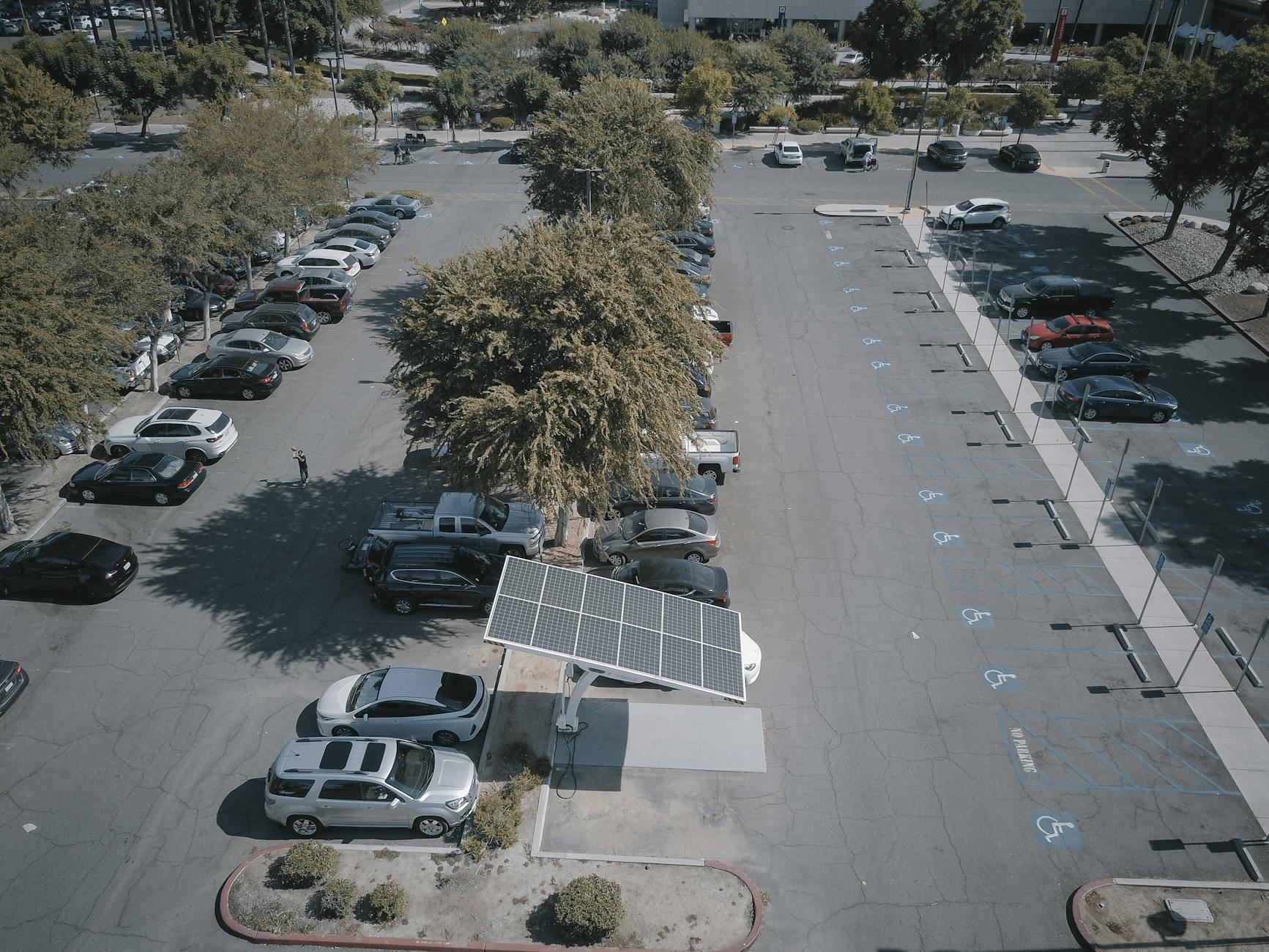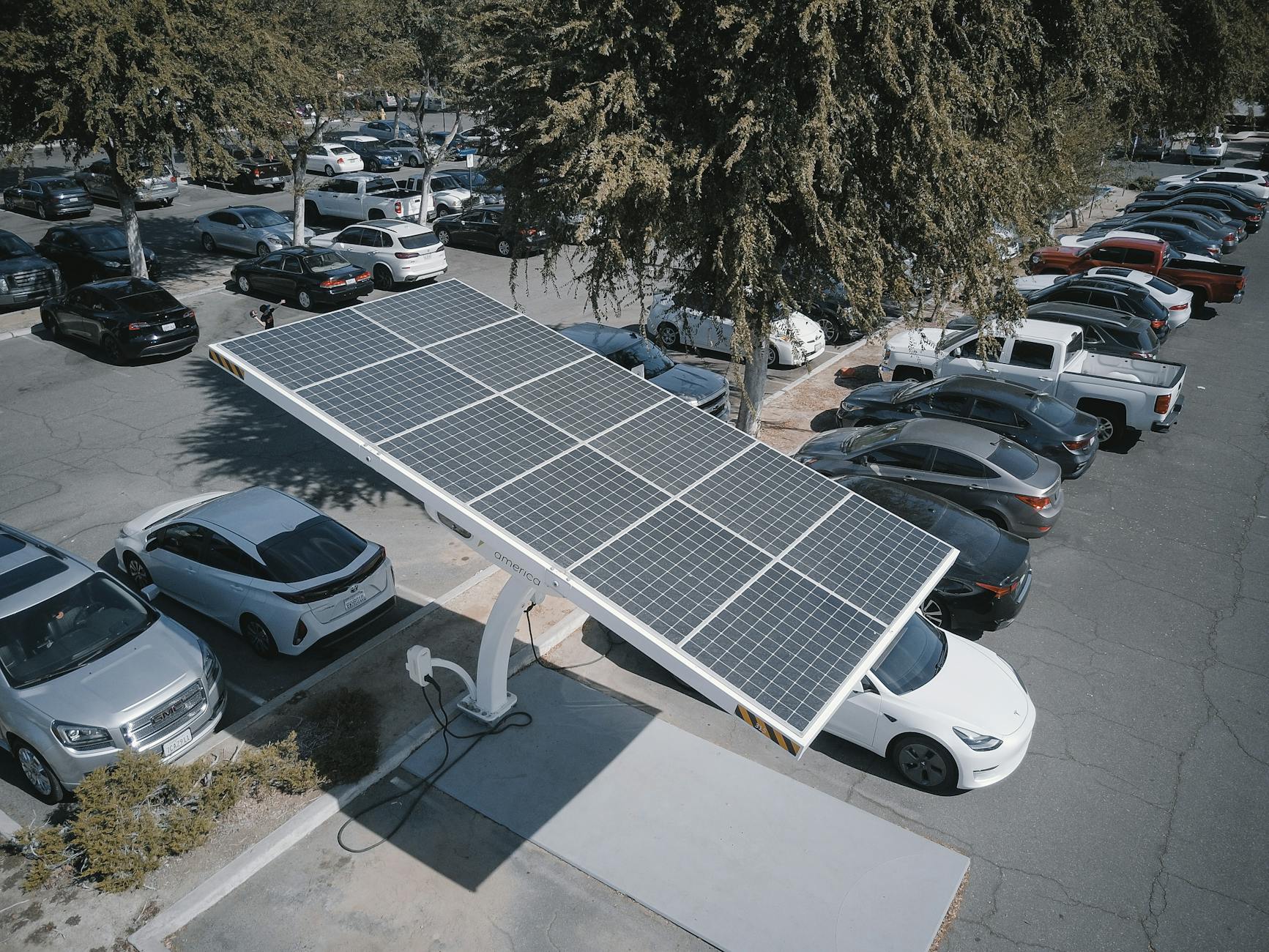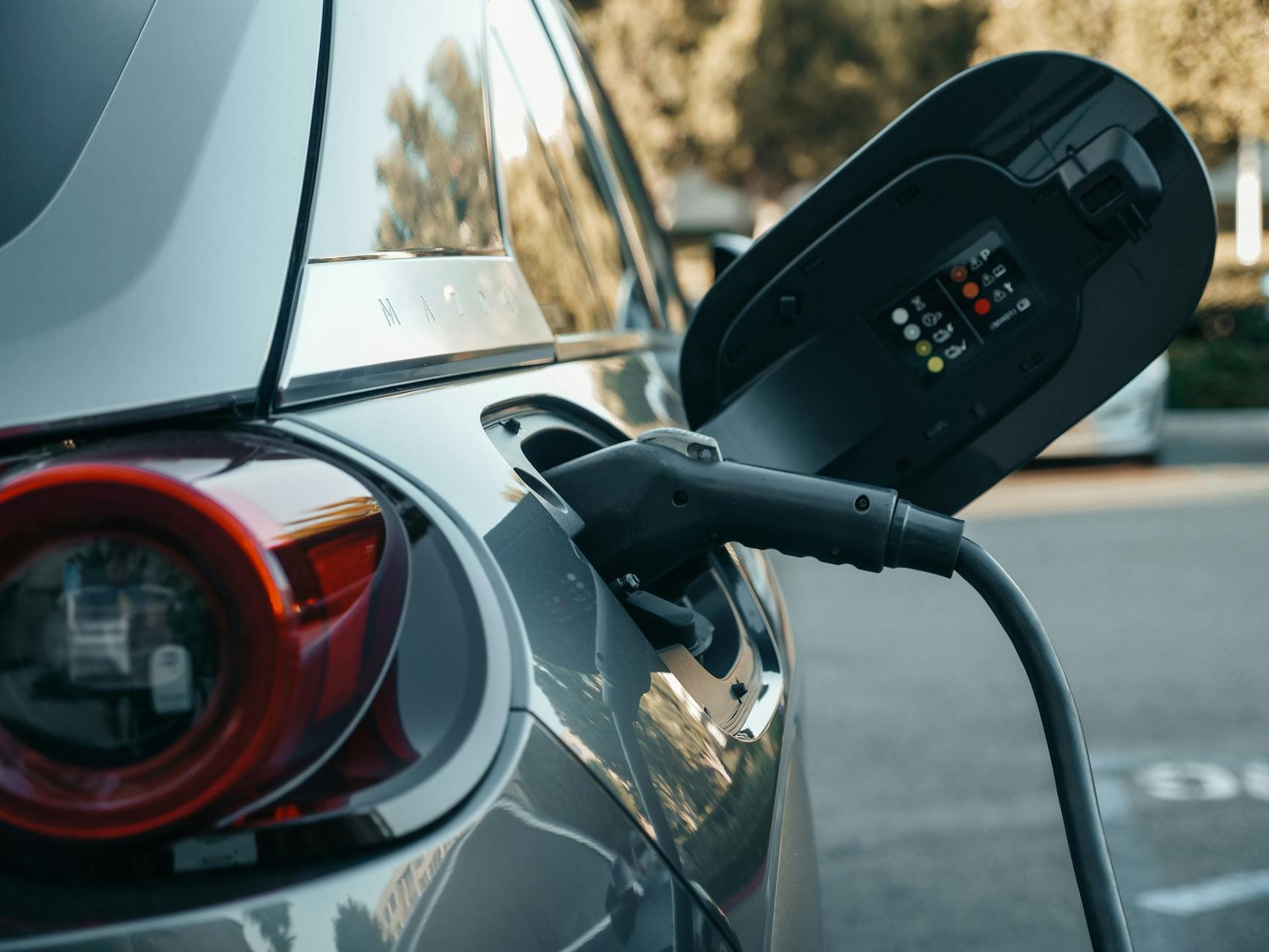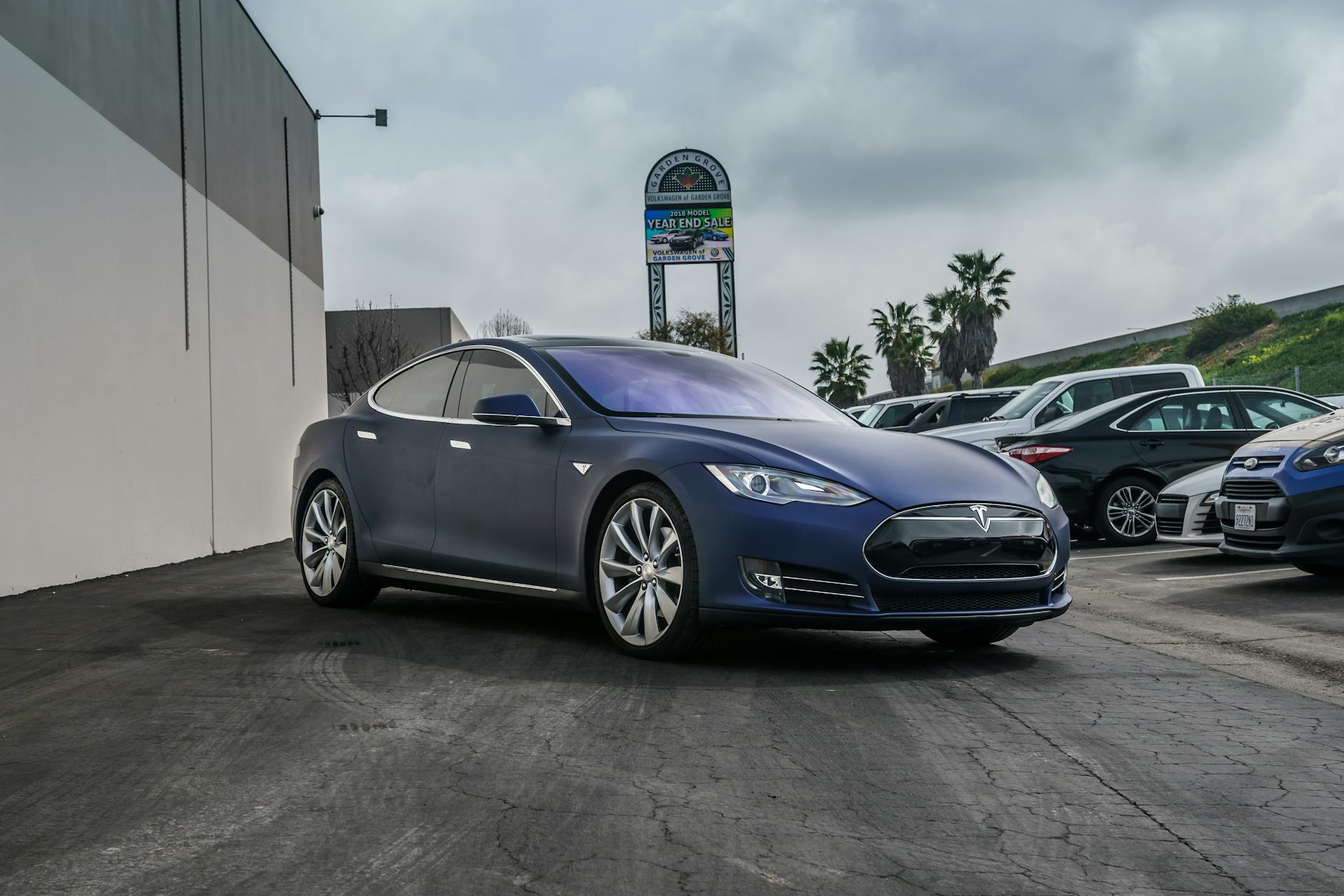The electric revolution is here, and it’s charging up America’s roads faster than ever before! 🚗⚡ Have you noticed more silent, sleek vehicles gliding past you lately? You’re not imagining things – Electric Vehicles (EVs) are rapidly becoming a common sight across the nation.
But what’s really driving this electrifying trend? Is it the allure of cutting-edge technology, the promise of a greener future, or simply the thrill of being part of the next big thing? As EV adoption rates soar, it’s crucial to understand not just the current landscape, but also the factors propelling this growth and the hurdles that still lie ahead.
In this deep dive into EV adoption trends in America, we’ll explore the current state of affairs, uncover the forces behind this automotive revolution, and examine its far-reaching impact on various sectors. Buckle up as we charge into the future of transportation, from the bustling streets of Silicon Valley to the heartland of America!
Current State of EV Adoption in America

A. Market share of EVs in new car sales
The electric vehicle (EV) market in America has been experiencing significant growth in recent years. As of 2022, EVs accounted for approximately 5.8% of all new car sales in the United States, marking a notable increase from previous years. This upward trend is expected to continue as more consumers recognize the benefits of electric vehicles and as manufacturers expand their EV offerings.
To put this growth into perspective, let’s look at the year-over-year increase in EV market share:
| Year | EV Market Share |
|---|---|
| 2018 | 2.1% |
| 2019 | 2.5% |
| 2020 | 2.3% |
| 2021 | 4.0% |
| 2022 | 5.8% |
B. Popular EV models and manufacturers
Several EV models have gained popularity among American consumers, with Tesla leading the pack. The top-selling EV models in the U.S. include:
- Tesla Model 3
- Tesla Model Y
- Ford Mustang Mach-E
- Chevrolet Bolt EV/EUV
- Volkswagen ID.4
While Tesla continues to dominate the EV market, traditional automakers are rapidly expanding their electric offerings. Manufacturers like Ford, General Motors, and Volkswagen are investing heavily in EV production and are expected to capture a larger market share in the coming years.
C. Regional differences in adoption rates
EV adoption rates vary significantly across different regions of the United States. Factors influencing these regional differences include:
- State-level incentives
- Charging infrastructure availability
- Environmental awareness
- Local regulations and policies
The states with the highest EV adoption rates are:
- California
- Washington
- Oregon
- Hawaii
- Vermont
These states have implemented supportive policies and incentives to encourage EV adoption, resulting in higher market penetration compared to other regions.
D. Comparison with global EV adoption trends
When comparing U.S. EV adoption trends with global figures, it’s clear that while America is making progress, it still lags behind some other countries. Here’s a comparison of EV market share in new car sales for select countries:
| Country | EV Market Share (2022) |
|---|---|
| Norway | 79.3% |
| Sweden | 33.0% |
| Netherlands | 23.0% |
| Germany | 17.7% |
| United Kingdom | 16.6% |
| United States | 5.8% |
While the U.S. EV market share is lower than some European countries, it’s important to note that America’s automotive market is significantly larger, making the total number of EVs sold quite substantial. Additionally, the U.S. is showing strong growth potential, with increasing consumer interest and manufacturer commitment to electric vehicles.
As we move forward, it’s crucial to examine the factors driving this growth in EV adoption across America. These drivers will play a pivotal role in shaping the future of electric mobility in the country.
Factors Driving EV Growth

Environmental awareness and concerns
As climate change continues to be a pressing global issue, more Americans are becoming environmentally conscious. This shift in mindset has significantly contributed to the growing interest in electric vehicles (EVs). Consumers are increasingly aware of the environmental impact of traditional combustion engines and are seeking greener alternatives.
EVs offer a promising solution to reduce carbon emissions from the transportation sector, which is one of the largest contributors to greenhouse gases in the United States. By choosing electric vehicles, drivers can significantly reduce their carbon footprint and contribute to cleaner air in their communities.
Technological advancements in battery technology
One of the key factors propelling EV growth is the rapid advancement in battery technology. These improvements have addressed many of the initial concerns about electric vehicles, such as range anxiety and charging times.
Here’s a comparison of battery technology advancements:
| Aspect | Past EVs | Current EVs |
|---|---|---|
| Range | 100-150 miles | 250-400+ miles |
| Charging Time | 8-10 hours | 30 minutes – 1 hour (fast charging) |
| Battery Life | 5-8 years | 10-15 years |
| Energy Density | Lower | Higher |
These technological improvements have made EVs more practical and appealing to a broader range of consumers.
Government incentives and regulations
Federal, state, and local governments have played a crucial role in promoting EV adoption through various incentives and regulations. Some of these include:
- Federal tax credits up to $7,500 for eligible EV purchases
- State-level rebates and tax incentives
- HOV lane access for EVs in certain states
- Stricter emissions standards for automakers
These policies have made EVs more affordable and attractive to potential buyers, while also pushing manufacturers to invest more in electric vehicle technology.
Decreasing costs of EVs
As technology improves and production scales up, the cost of electric vehicles has been steadily decreasing. This trend has made EVs more accessible to a wider range of consumers. Factors contributing to the decreasing costs include:
- Economies of scale in battery production
- Increased competition among EV manufacturers
- Improvements in manufacturing processes
- Declining raw material costs for batteries
While EVs still tend to have a higher upfront cost compared to their gas-powered counterparts, the total cost of ownership over the vehicle’s lifetime is becoming increasingly competitive.
Expanding charging infrastructure
The growth of charging infrastructure has been instrumental in alleviating range anxiety and making EVs a viable option for more drivers. Both public and private sectors have been investing in expanding the charging network across the country.
Now that we have explored the factors driving EV growth, it’s important to understand the challenges that still exist in achieving widespread EV adoption.
Challenges to Widespread EV Adoption

Range anxiety and charging time concerns
One of the most significant hurdles to widespread EV adoption is range anxiety – the fear of running out of battery power before reaching a charging station. This concern is compounded by longer charging times compared to traditional fuel refills. Let’s examine these issues in detail:
Impact of Range Anxiety
Range anxiety affects potential EV buyers in several ways:
- Hesitation to purchase EVs for long-distance travel
- Reluctance to rely on EVs as primary vehicles
- Increased stress during trips due to constant battery monitoring
Charging Time Comparison
| Charging Method | Time to Full Charge | Range Added |
|---|---|---|
| Level 1 (120V) | 20-40 hours | 2-5 miles/hour |
| Level 2 (240V) | 4-10 hours | 10-20 miles/hour |
| DC Fast Charging | 20-60 minutes | 60-80% charge |
While charging times have improved significantly, they still lag behind the convenience of quick gas station fill-ups.
Limited model availability in certain vehicle segments
Despite the growing EV market, there are still gaps in model availability, particularly in certain popular vehicle segments:
- Full-size pickup trucks
- Large SUVs
- Affordable compact cars
This limited selection can deter potential buyers who have specific vehicle needs or preferences.
Higher upfront costs compared to conventional vehicles
Although the total cost of ownership for EVs can be lower in the long run, the initial purchase price remains a significant barrier for many consumers. Factors contributing to higher upfront costs include:
- Advanced battery technology
- Limited production scales
- Research and development expenses
While government incentives and tax credits help offset these costs, they are not available in all regions and may have eligibility restrictions.
Consumer education and awareness gaps
Many potential EV buyers lack comprehensive information about electric vehicles, leading to misconceptions and hesitation. Key areas where consumer education is needed include:
Understanding EV Benefits
- Environmental impact
- Long-term cost savings
- Performance advantages
Navigating Charging Infrastructure
- Home charging options
- Public charging network availability
- Workplace charging programs
Debunking Common Myths
- Battery lifespan and replacement costs
- Winter performance concerns
- Maintenance requirements
Addressing these challenges is crucial for accelerating EV adoption in America. As we move forward, it’s important to consider how these obstacles are being tackled by manufacturers, policymakers, and advocacy groups to pave the way for a more electric future on American roads.
Impact of EV Adoption on Various Sectors
:format(webp)/images/2022/08/09/charging_modern_electric_car_battery_on_the_street.jpg)
A. Energy grid and utilities
The widespread adoption of electric vehicles (EVs) is poised to significantly impact the energy grid and utilities sector. As more consumers switch to EVs, the demand for electricity will increase, necessitating changes in power generation, distribution, and management.
Increased Electricity Demand
The growing number of EVs on the road translates to a higher electricity consumption. Utilities must prepare for this surge in demand by:
- Upgrading infrastructure
- Implementing smart grid technologies
- Investing in renewable energy sources
Here’s a breakdown of the projected increase in electricity demand due to EV adoption:
| Year | Projected EV Market Share | Estimated Increase in Electricity Demand |
|---|---|---|
| 2025 | 10% | 2-3% |
| 2030 | 25% | 5-7% |
| 2035 | 40% | 8-10% |
B. Oil and gas industry
The rise of EVs poses a significant challenge to the oil and gas industry, which has long relied on the transportation sector for a substantial portion of its revenue.
Shifting Demand Patterns
As EVs become more prevalent, the demand for gasoline and diesel fuel is expected to decline. This shift will force oil and gas companies to:
- Diversify their product offerings
- Invest in alternative energy sources
- Explore new markets and applications for their products
C. Automotive manufacturing and supply chains
The transition to EVs is reshaping the automotive industry, affecting both manufacturers and their supply chains.
Changes in Manufacturing Processes
EV production requires different components and assembly processes compared to traditional internal combustion engine vehicles. This shift is leading to:
- Retooling of existing factories
- Development of new production facilities
- Changes in workforce skills and training requirements
Supply Chain Transformation
The EV supply chain differs significantly from that of conventional vehicles:
- Increased demand for battery materials (lithium, cobalt, nickel)
- Reduced need for traditional engine components
- New partnerships between automakers and technology companies
D. Urban planning and infrastructure development
The growth of EVs is influencing how cities are planned and developed, with a focus on creating EV-friendly environments.
Charging Infrastructure
One of the most visible impacts is the need for extensive charging infrastructure:
- Public charging stations in parking lots, shopping centers, and along highways
- Residential charging solutions for multi-unit dwellings
- Workplace charging facilities
Urban Design Considerations
Cities are adapting their design and planning processes to accommodate EVs:
- Zoning changes to allow for charging station installations
- Integration of EV charging with smart city initiatives
- Redesign of parking spaces and structures to accommodate charging equipment
As we look ahead, it’s clear that the impact of EV adoption extends far beyond the automotive sector, reshaping various industries and urban environments. These changes present both challenges and opportunities for businesses and policymakers alike.
Future Projections for EV Adoption

Forecasted market share by 2030
As we look towards the future of electric vehicles (EVs) in America, forecasts paint an optimistic picture. By 2030, experts predict a significant increase in EV market share. According to recent studies, EVs are expected to account for 30-50% of new vehicle sales in the United States by 2030. This projected growth is driven by various factors, including:
- Improved battery technology
- Decreasing production costs
- Expanding charging infrastructure
- Increasing consumer awareness
Here’s a breakdown of the projected EV market share by vehicle type:
| Vehicle Type | Projected Market Share (2030) |
|---|---|
| Passenger Cars | 40-60% |
| Light-duty Trucks | 25-35% |
| Commercial Vehicles | 15-25% |
Emerging technologies and their potential impact
The future of EV adoption is closely tied to technological advancements. Several emerging technologies are poised to revolutionize the EV landscape:
- Solid-state batteries: Offering higher energy density and faster charging times
- Wireless charging: Enabling convenient, cable-free charging options
- Vehicle-to-grid (V2G) technology: Allowing EVs to feed energy back into the power grid
- Advanced driver assistance systems (ADAS): Enhancing safety and paving the way for autonomous EVs
These technologies are expected to address current limitations and make EVs more attractive to a broader range of consumers.
Shift in consumer preferences and behaviors
As EV technology improves and awareness grows, we’re likely to see significant shifts in consumer preferences and behaviors:
- Increased demand for electric SUVs and pickup trucks
- Growing interest in leasing EVs as a way to access the latest technology
- Rise of EV-sharing and subscription services
- Greater emphasis on sustainability and environmental impact in purchasing decisions
These changing preferences will likely drive automakers to expand their EV offerings across various vehicle segments.
Anticipated policy changes and their effects
Government policies will play a crucial role in shaping the future of EV adoption. Some anticipated policy changes include:
- Extension and expansion of federal tax credits for EV purchases
- Stricter emissions standards for conventional vehicles
- Increased investment in charging infrastructure
- Mandates for EV sales targets in certain states
These policy changes are expected to accelerate EV adoption by:
- Making EVs more affordable for consumers
- Incentivizing automakers to expand their EV lineups
- Addressing range anxiety through improved charging networks
- Creating a more favorable regulatory environment for EV production and sales
As we move towards 2030, the combination of technological advancements, shifting consumer preferences, and supportive policies is likely to create a robust ecosystem for EVs in America. While challenges remain, the future of EV adoption looks promising, with the potential to significantly reshape the automotive landscape and contribute to a more sustainable transportation sector.

The electric vehicle revolution is well underway in America, with adoption rates steadily climbing and a growing infrastructure to support this shift. As we’ve explored, factors such as environmental concerns, technological advancements, and supportive policies are driving this growth. However, challenges like range anxiety, charging infrastructure limitations, and higher upfront costs still need to be addressed for widespread adoption.
As the EV market continues to evolve, its impact will be felt across various sectors, from energy and transportation to urban planning and the job market. With projections indicating a significant increase in EV adoption over the coming years, it’s clear that electric vehicles are not just a passing trend but a fundamental shift in how we approach transportation. Whether you’re a consumer, policymaker, or industry professional, staying informed about EV adoption trends will be crucial in navigating this electrifying future.
